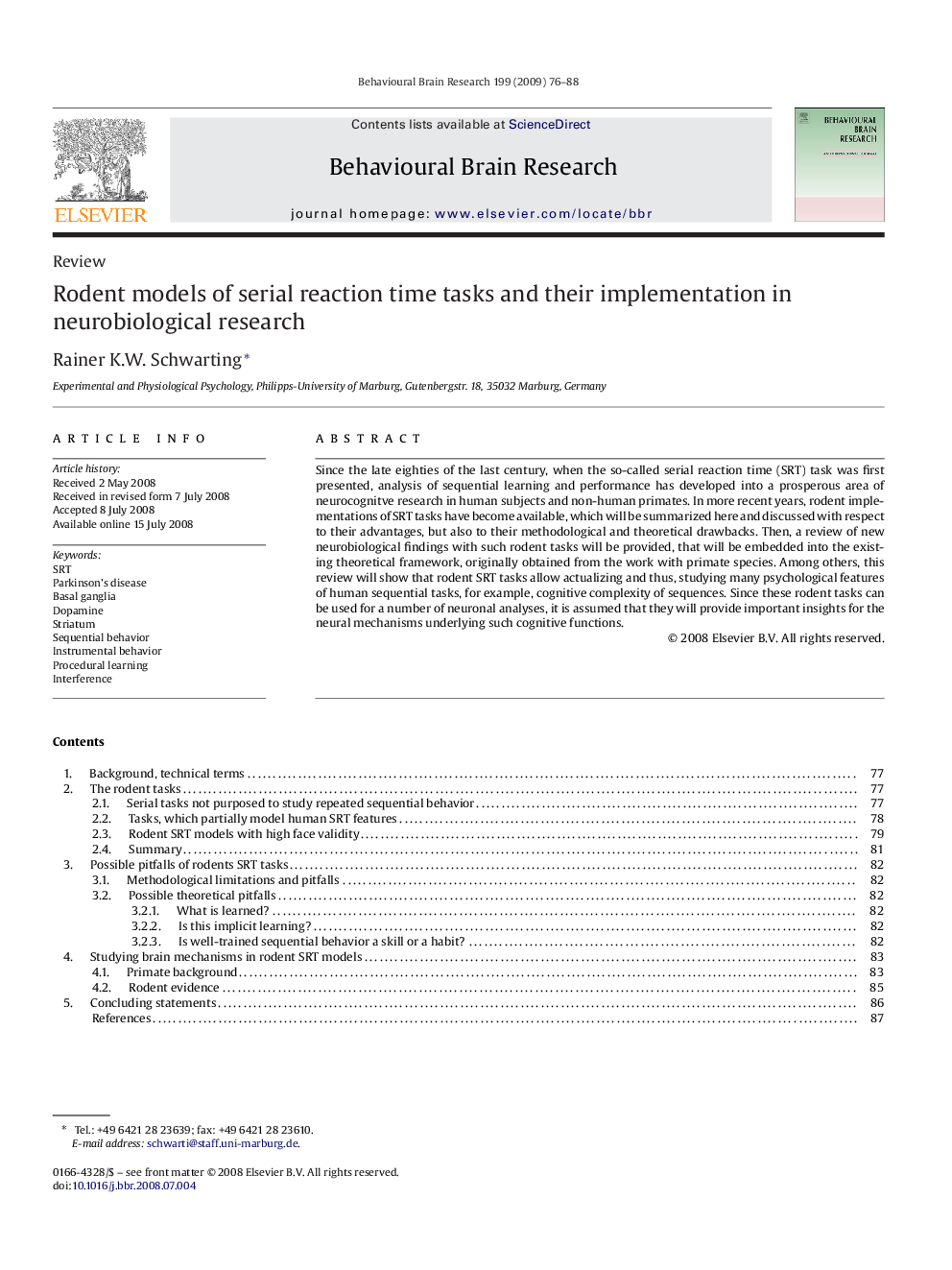| Article ID | Journal | Published Year | Pages | File Type |
|---|---|---|---|---|
| 4314846 | Behavioural Brain Research | 2009 | 13 Pages |
Since the late eighties of the last century, when the so-called serial reaction time (SRT) task was first presented, analysis of sequential learning and performance has developed into a prosperous area of neurocognitve research in human subjects and non-human primates. In more recent years, rodent implementations of SRT tasks have become available, which will be summarized here and discussed with respect to their advantages, but also to their methodological and theoretical drawbacks. Then, a review of new neurobiological findings with such rodent tasks will be provided, that will be embedded into the existing theoretical framework, originally obtained from the work with primate species. Among others, this review will show that rodent SRT tasks allow actualizing and thus, studying many psychological features of human sequential tasks, for example, cognitive complexity of sequences. Since these rodent tasks can be used for a number of neuronal analyses, it is assumed that they will provide important insights for the neural mechanisms underlying such cognitive functions.
